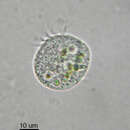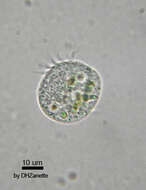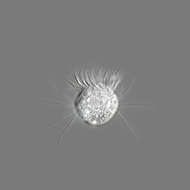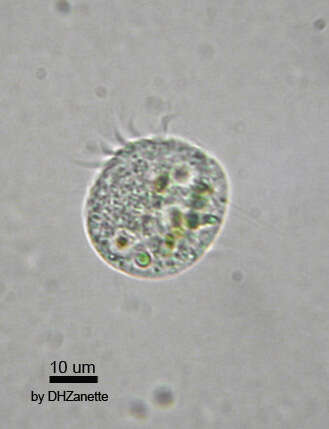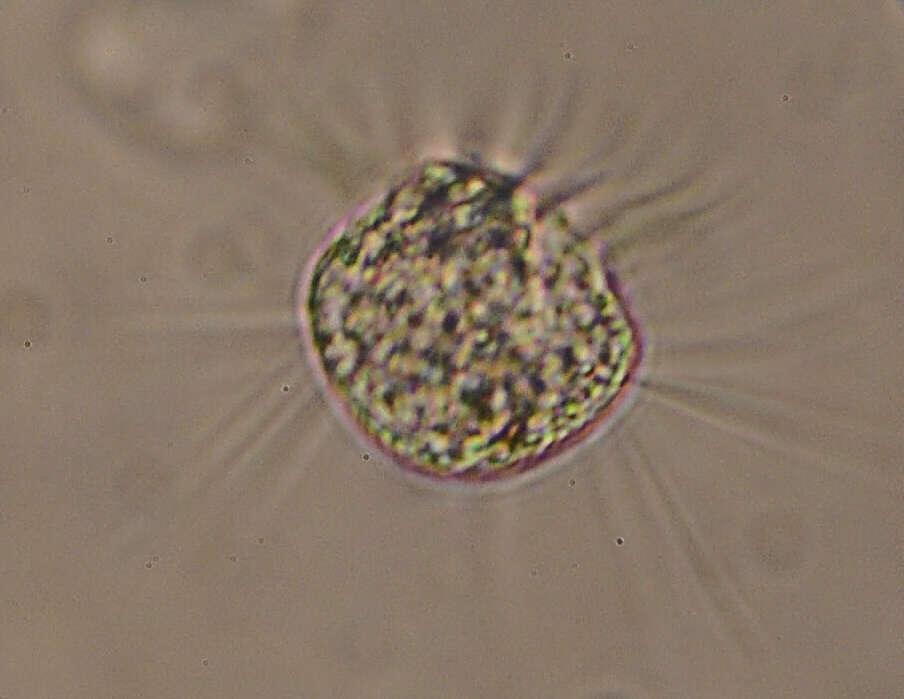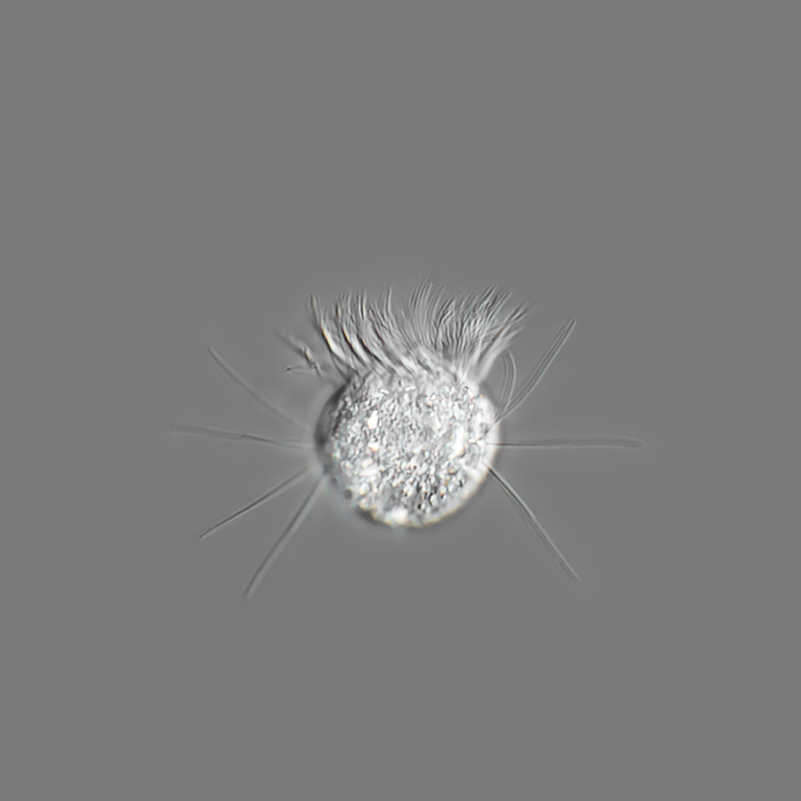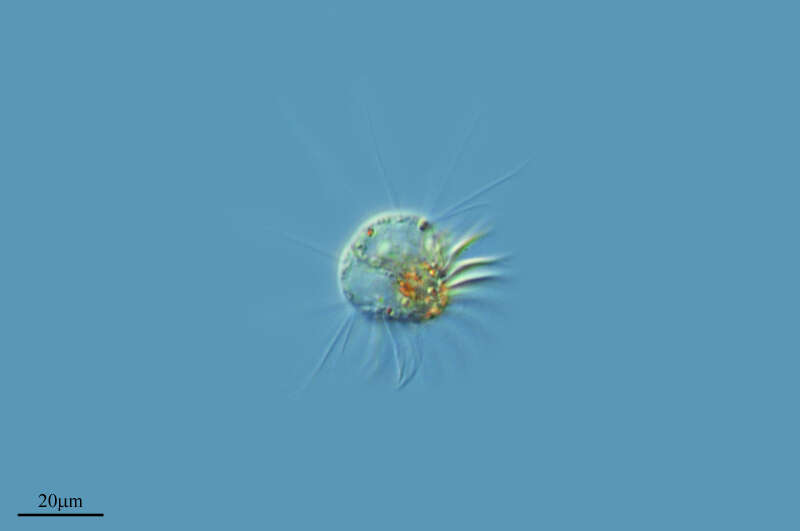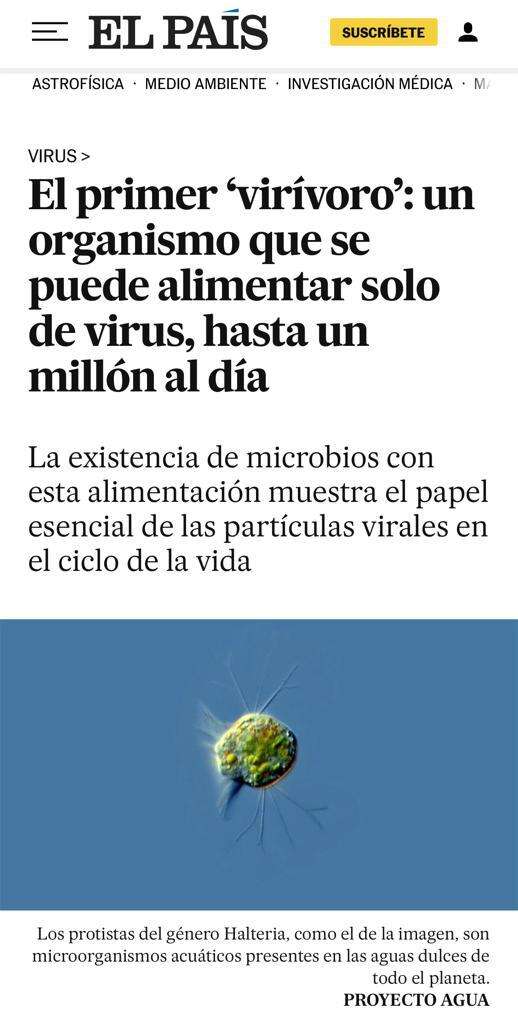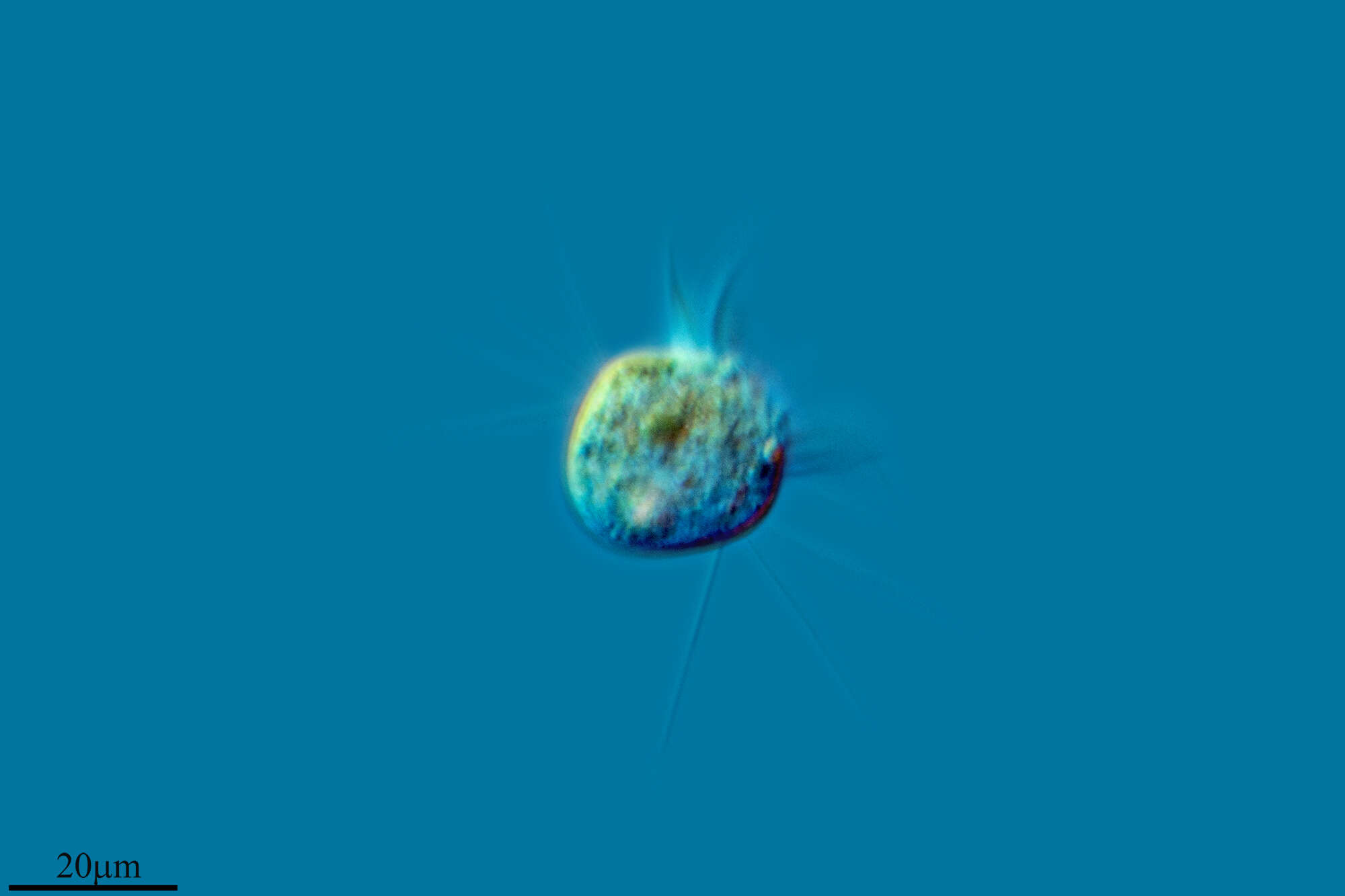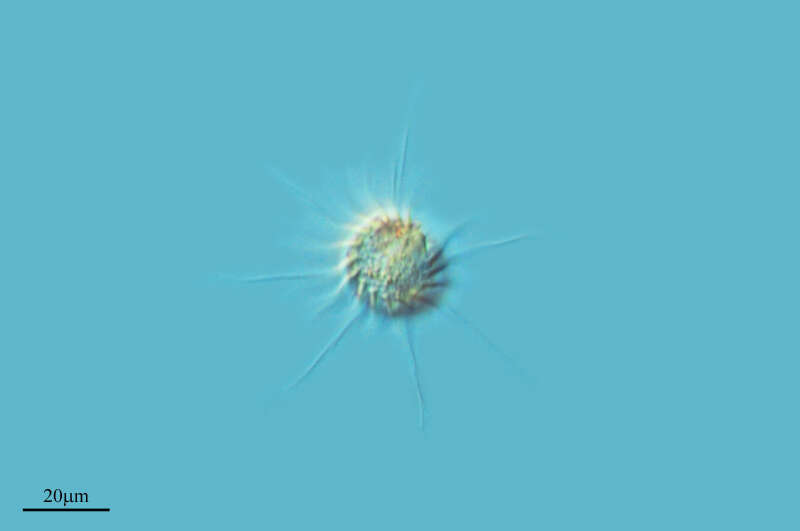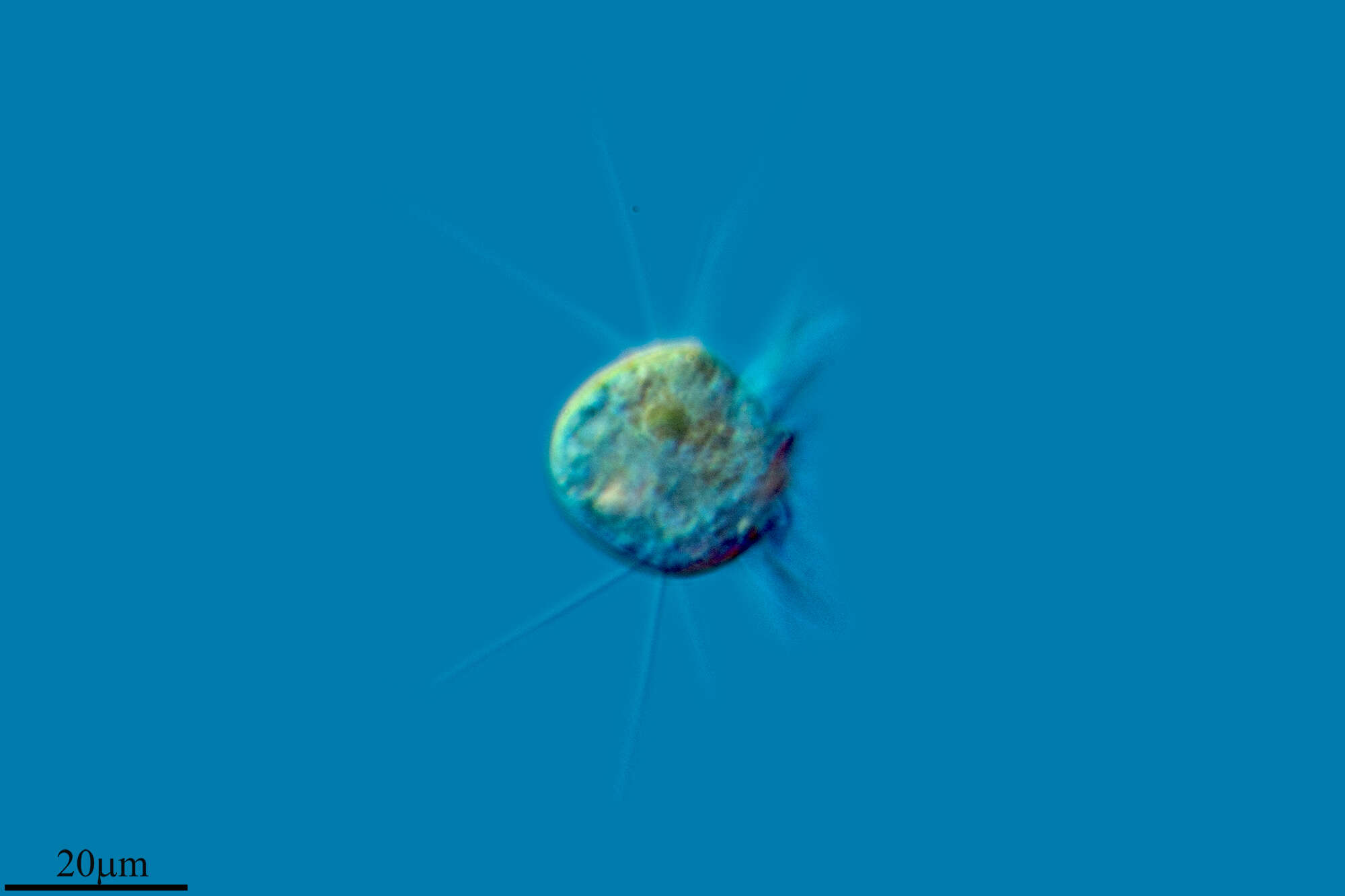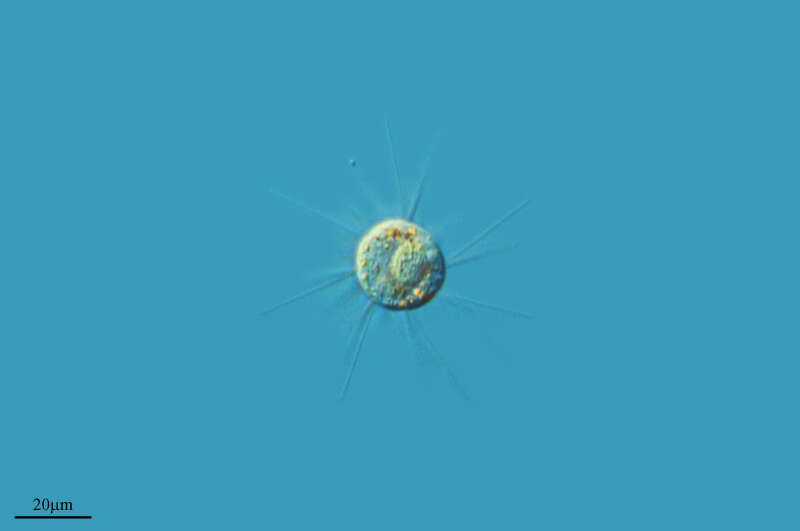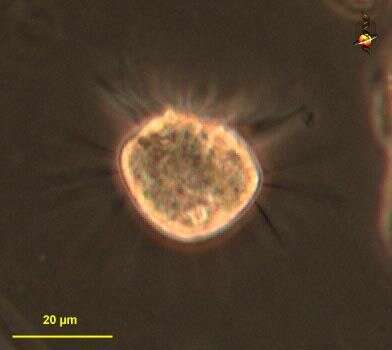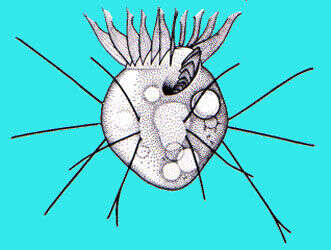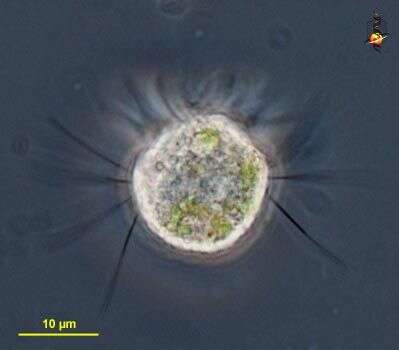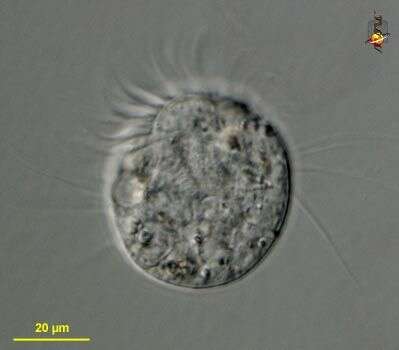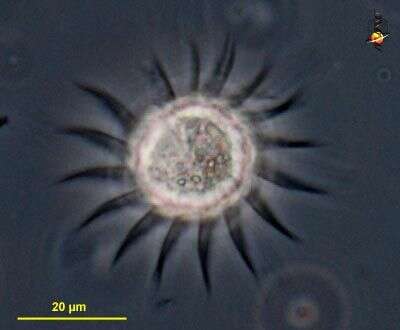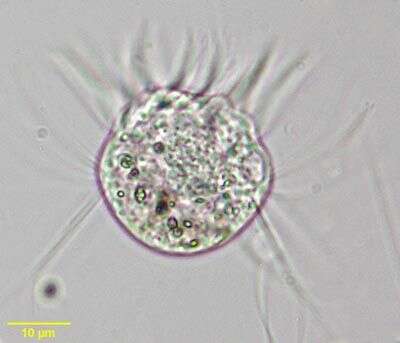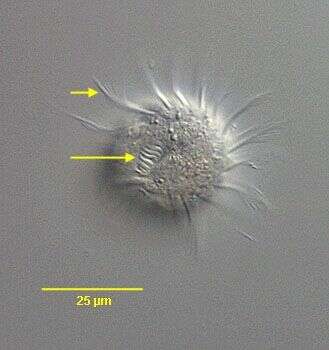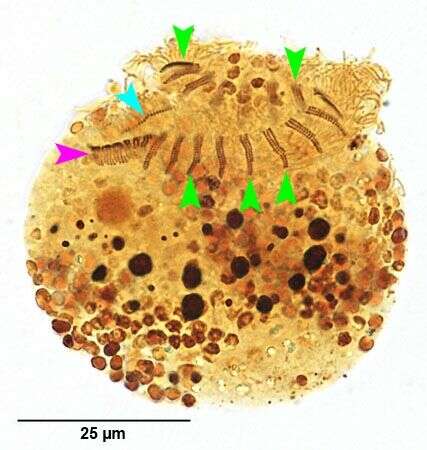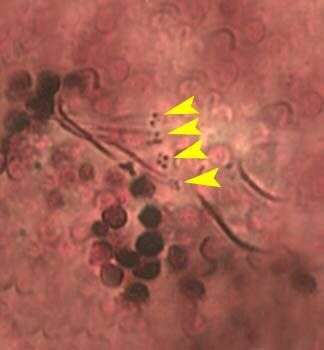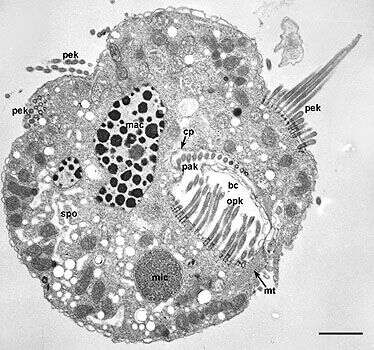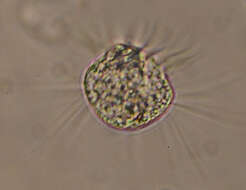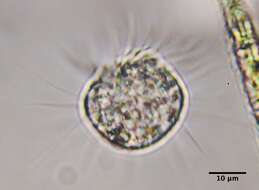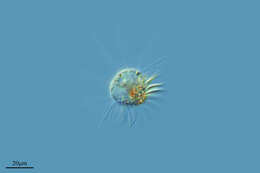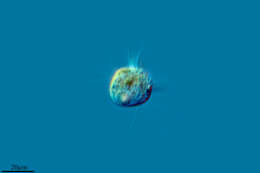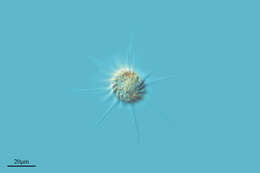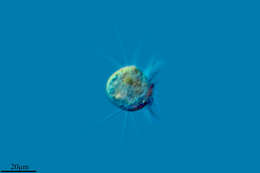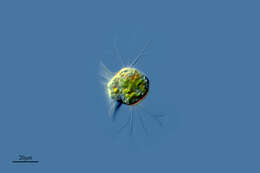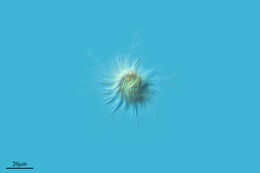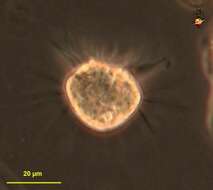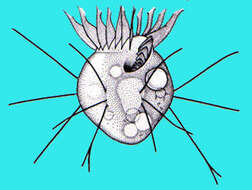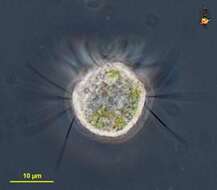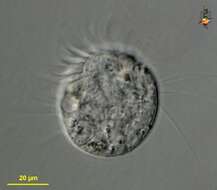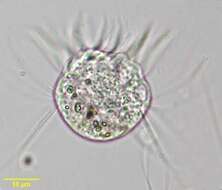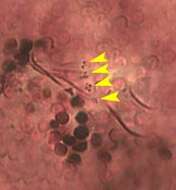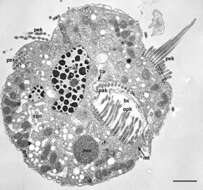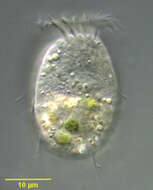-
Description: English: Halteria, Order: Oligotrichida. Date: 6 November 2006 (original upload date). Source: Own work. Author: Damián H. Zanette.
-
-
-
Halteria grandinella The specimen was gathered in the pond Birkensee near Rödelsee (Lower Franconia, Germany). Sampling date 3/2020.Copyright Dr. Rainer Meisch, Würzburg, Germany.Images were taken using Zeiss Axioplan with Canon DSLR Image under Creative Commons License V 3.0 (CC BY-NC-ND). Place name: Pond Birkensee near Rödelsee (Lower Franconia, Germany) Latitude: 49.71819841 Longitude: 10.27807474 Probe aus dem Birkensee bei Rödelsee (Unterfranken). Datum der Aufsammlung: 3/2020. Copyright Dr. Rainer Meisch, Würzburg. Mikrotechnik: Zeiss Axioplan, Kamera: Canon DSLR. Creative Commons License V 3.0 (CC BY-NC-ND). For permission to use of (high-resolution) images please contact postmaster@protisten.de.
-
Moreruela de Tbara, Castilla y Len, Espaa
-
El pasado mircoles 11 de enero, y en un artculo de Miguel ngel Criado, el diario "EL PAS" publicaba este artculo:
elpais.com/ciencia/2023-01-12/el-primer-virivoro-un-organ....En el que se habla de la sorprendente capacidad de ciliados como ste,
Halteria para devorar virus en cantidades ingentes y se presentaba en la portada con una fotografa de nuestra galera.Un mejor conocimiento de los organismos microscpicos, puede ser de gran ayuda para conocer el de los macroscpicos y ayudar a resolver algunos de los problemas y retos a los que nuestra sociedad se enfrenta.Desde esta galera, modestamente, tratando de combinar la belleza de estos seres y el conocimiento que se tiene de ellos tratamos de acercar este universo de los microscpico a todas las personas que se interesen en l, disfrutando de cada descubrimiento.Agradecemos nuevamente a el diario "El Pas" la utilizacin de nuestras imgenes.
-
Canada Del Hoyo, Castille la Mancha, Spain
-
Madrid, Spain
-
Canada Del Hoyo, Castille la Mancha, Spain
-
Urbanitzacio El Lledoner, Catalonia, Spain
-
Madrid, Spain
-
Madrid, Spain
-
Halteria (halt-ear-ee-a) an oligotrich ciliate found in fresh-water habitats, with an anterior zone of membranelles. Halteria uses equatorial cirri to move with a bounding motion. Consumes bacteria, small algae and small detrital particles. Phase contrast.
-
-
Halteria (halt-ear-ee-a) an oligotrich ciliate found in fresh-water habitats, with an anterior zone of membranelles and an equatorial band of sparse, long, stiff cirri. Moves with a bounding motion. Consumes bacteria, small algae and small detrital particles. Phase contrast.
-
Halteria (halt-ear-ee-a) an oligotrich ciliate found in fresh-water habitats, with an anterior zone of membranelles which is emphasized in this image. Uses equatorial cirri to move with a bounding motion. Consumes bacteria, small algae and small detrital particles. Differential interference contrast.
-
Halteria (halt-ear-ee-a) is a small oligotrich ciliate with an adoral zone of membranelles extending around the anterior of the cell. This cell has been photographed from the anterior apex, and this image shows the array of membranelles. Phase contrast. Material from Nymph Creek and Nymph Lake, thermal sites within Yellowstone National Park, photograph by Kathy Sheehan and David Patterson.
-
Halteria (halt-tear-ee-a) grandinella. The somatic ciliature of this ciliate is very reduced. The body is globular or ellipsoidal. The posterior end often depressed. The oral apparatus consists of an almost circular zone of adoral membranelles. The macronucleus is ellipsoidal and located centrally. The contractile vacuole in the posterior third of the cell, located near the buccal cavity. The long bristles (jumping bristles) arise equatorially; these cause a jumping movement that is characteristic of the genus Halteria. Big jumps followed by periods of forward swimming in spirals. Common in the plankton of fresh water. This specimen was collected in the plankton of freshwater ponds near Konstanz, Germany. Differential interference contrast.
-
Portrait of Halteria grandinella (Mueller,1773) Dujardin, 1841, a ubiquitous small spirotrich ciliate. The body is globular with a prominent anterior wreath of membranelles. Long stiff cirri are seen around the equator. These are used for sudden jumping (saltatorial) movements. The wreath of adoral membranelles projects anteriorly in this image. A peripheral contractile vacuole is seen in this image. From freshwater pond near Boise, Idaho. Brightfield.
-
Anterior apical view of Halteria grandinella (Mueller,1773) Dujardin, 1841, a ubiquitous small spirotrich ciliate. The body is globular with a prominent anterior wreath of membranelles. There are long stiff cirri around the equator. These are used for sudden jumping (saltatorial) movements. The wreath of adoral membranelles (short arrow) are seen in this image. The inner adoral membranelles (long arrow) are also seen.A peripheral contractile vacuole is seen in this image. From freshwater pond near Boise, Idaho. DIC.
-
Oral infraciliature ( left lateral view) of Halteria grandinella (Mueller,1773) Dujardin, 1841.There is an inconspicuous undulating membrane to the right of the buccal cavity (light blue arrowhead). The adoral membranelles (AZM) are separated into approximately 5 to10 inner (buccal) membranelles (pink arrowhead) and a collar of 16 outer membranelles, each composed of two longer kineties and one shorter kinety (green arrowheads). The AZM is of the "open" type.These run clockwise to the cytostome unlike the peritrich ciliates in which the adoral ciliary spiral runs counterclockwise to the cytostome. Stained by the silver carbonate technique (see Foissner, W. Europ. J. Protistol., 27:313-330;1991).Brightfield.
-
Detail view of one ciliary row of jumping bristles in Halteria grandinella (Mueller,1773) Dujardin, 1841. there are approximately 7-10 rows of these bristles around the equator. Each row has about 6 pairs of basal bodies (arrowheads) in this species, two anterior pairs only the anterior basal body of each of these pairs being ciliated (as seen in this image). The four posterior pairs occur in two groups each bearing two bristles. The anterior of these tetrads has lost it's bristles in preparation. Stained by the silver carbonate technique (see Foissner, W. Europ. J. Protistol., 27:313-330;1991). Brightfield
-
In the buccal cavity a row of paroral cilia (pak) is seen to separate the buccal cavity (bc) from the beginning of the cytopharynx (cp). The macronucleus (mac) and micronucleus (mic) are visible. spo, spongiome of CV; pek, membranelles of perioral ciliature; opk, oral cilia; mt, microtubules bordering the ventral wall of the BC. EM taken on 3/12/71 by R. Allen with Hitachi HU11A TEM. Neg. 3,800X. Bar = 2 microns.
This image is available in Richard Allen's collection.
-
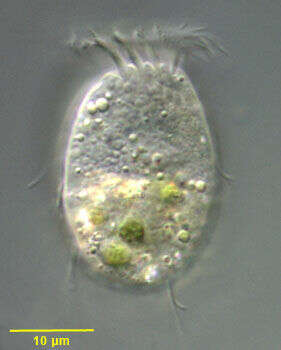
Dorsal view of Halteria oblonga (Kellicott, 1885;Kahl,1932), a spirotrich ciliate. The body is slightly elongate, rounded posteriorly and truncate anteriorly. There is a prominent anterior wreath of adoral membranelles that winds clockwise into the funnel-shaped peristome (seen in this image). The somatic ciliature is reduced to widely spaced longitudinal files of stout double cilia. The posterior cilia are longer with a characteristic J-shape. These trail behind the organism during swimming, which is accomplished by the rapid beating of the AZM. The single peripheral contractile vacuole is located in the anterior 1/3 adjacent to the oral aperture. The single spheroid granular macronucleus and single round micronucleus are seen posterior to the contractile vacuole. Although Kahl (I. Wimpertiere oder Ciliata. 3. Spirotricha pp. 505-506, Gustav Fischer Verlag, 1932) describes endosymbiotic zoochlorellae, at least some of the algae in these individuals appear to have been ingested. Collected from organically enriched freshwater pond near Boise, Idaho June 2003. DIC optics.

